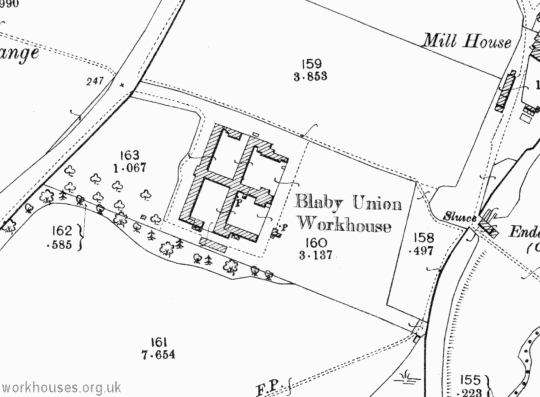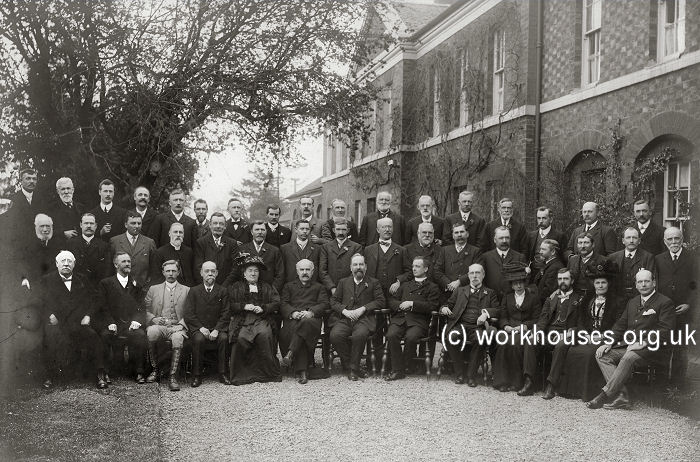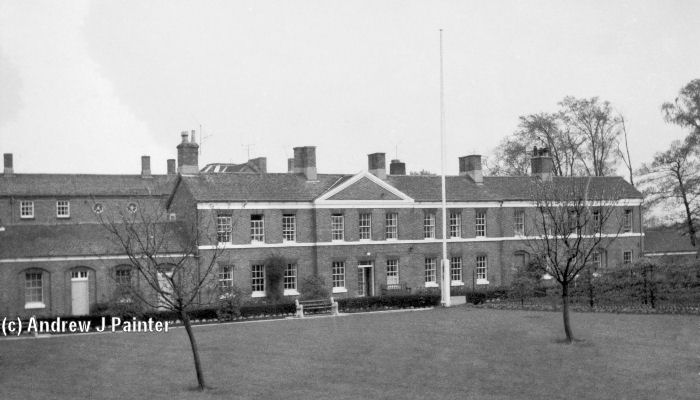Blaby, Leicestershire
Up to 1834
A parliamentary report of 1777 recorded parish workhouses in operation at Knighton (for up to 12 inmates), Narborough (8), Oadby (30), and Wigston Magna (32).
After 1834
Blaby Poor Law Union officially came into existence on 6th February 1836. Its operation was overseen by an elected Board of Guardians, 32 in number, representing its 22 constituent parishes as listed below (figures in brackets indicate numbers of Guardians if more than one):
County of Leicester:
Aylestone (2), Blaby (2), Braunstone, Cosby (2), Countesthorpe (2), Croft, Enderby (2), Foston, Glenfield, Glenn [Glen] Parva, Huncote, Kilby, Kirby Muxloe, Knighton, Leicester Forest, Lubbesthorpe, Narborough (2), Oadby (2), Potters Marston, Thurlaston, Whetstone (2), Wigston Magna (3).
Later Additions: Braunstone Frith (from 1861), East Wigston (from 1894), Freakes Ground (1862-91), Glenfield Frith (from 1861), Kilby Frith (from 1861), Knoll and Bassett House (1861-1909), New Found Pool (1862-91), New Parks (from 1862).
The population falling within the Union at the 1831 census had been 13,061 with parishes ranging in size from Potters Marston (population 11) to Wigston Magna (2,174). The average annual poor-rate expenditure for the period 1833-5 had been £9,145 or 14s.0d. per head of the population.
A new Blaby Union workhouse was erected at Enderby in 1837. While it was being built, the existing Wigston Magna workhouse was rented for a year. The new building was designed by William Parsons who was a Guardian of the Leicester Poor Law Union. (Because of his position, Leicester had barred Parsons from designing the Leicester workhouse.) His design for Blaby was based on Poor Law Commissioners' model "square" design published by in 1835. In 1836, the Poor Law Commissioners authorised an expenditure of £4,400 on construction of the building which was to accommodate 350 inmates. The site layout and location are shown on the 1903 map below.

Blaby workhouse site, 1903.
The picture below shows the Union guardians and officials at the workhouse in 1911.

Blaby Union guardians and officials at the workhouse, 1911.
© Peter Higginbotham.
The names of those in the above picture are given below (left to right).
Back row: T Betts, WJ Thornton, A Collis, J Carrington (Master), A Green, FM Woodcock, R Bailey, JH Brewin, W Whyatt, R Burgess, W Dunmore, RF Gamble, E Smith, JW Hartopp, WJ Turner, J Duncan.
Middle row:: C Bassett, JT Soars, JCA Richards, Rev. O Philpott, W Everard, R Taylor, S Laundon, CW Shipp, E Veasey, W Kemp, J North, FS Freckleton, Rev. J Luck, T Ward, CJ Newby, W Garner.
Front row: HP Curtis, RJ Grice, LEH Stevens, G Weston, Mrs Shield, Rev. I Raine, W Young (Chairman), Rev. Whiteley (Vice Chairman), BA Shires (Clerk), Mrs Smith, EC Tomlinson, Mrs Preston, W Sheen.
After 1930, the workhouse became Enderby House County Home providing accommodation mainly for the elderly and chronic sick. The picture below was kindly provided by Andrew Painter whose mother was matron at the institution between about 1938 and 1968.

Blaby workhouse from the north-west, 1960s.
© Andrew Painter.
The old buildings were demolished in the late 1960s and replaced by modern premises for accommodating the elderly.
Staff
Inmates
Records
Note: many repositories impose a closure period of up to 100 years for records identifying individuals. Before travelling a long distance, always check that the records you want to consult will be available.
- The Record Office for Leicestershire, Leicester and Rutland, Long Street, Wigston Magna, Leicester, LE18 2AH. Holdings include: Guardians' minutes (1836-1930); Births (1867-1926); Deaths (1866-1914); Creed register (1899-1938); Punishment book (1914-27); Bathing register (1914-39); etc.
Bibliography
- Higginbotham, Peter The Workhouse Encyclopedia (2014, The History Press)
Links
- None.
Unless otherwise indicated, this page () is copyright Peter Higginbotham. Contents may not be reproduced without permission.


